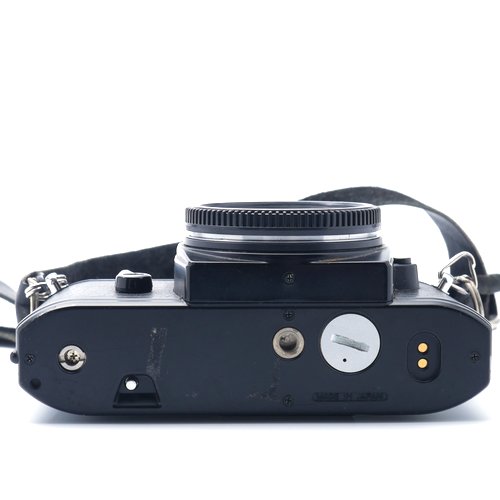Powering Your Photography: A Comprehensive Guide to the Nikon EM Battery

The Nikon EM operates on two SR44 or S76 silver-oxide batteries, or two LR44 alkaline batteries. Without batteries, the camera will only operate with a 1/90th of a second shutter speed. The light meter will not work.
What type of battery does the Nikon EM use?
The Nikon EM operates on two SR44 or S76 silver-oxide batteries, or two LR44 alkaline batteries. Here’s what you can expect from these power sources:
-
S76 Silver-Oxide Battery
- Typical lifespan: Around 12 months of regular use.
- Advantages: More stable voltage output over their lifespan, which translates to more consistent performance.
- Disadvantages: Slightly more expensive than alkaline counterparts.
-
A76 Alkaline Battery
- Typical lifespan: Around 6 months of regular use.
- Advantages: Cheaper and easier to find.
- Disadvantages: Voltage output decreases over time, potentially affecting camera performance.
Affiliate Advertising Disclosure
Outside the Shot is a participant in the Amazon Services LLC Associates Program, an affiliate advertising program designed to provide a means for sites to earn advertising fees by advertising and linking to Amazon.com.
As an eBay Partner, I may be compensated if you make a purchase. I also participate in affiliate advertising programs with KEH and Adorama. More can be found on the Affiliate Discolsure page.
| Battery Type | Model | Amazon | eBay |
|---|---|---|---|
| Alkaline | LR44 | Buy | Buy |
| Silver-Oxide | SR44 | Buy | Buy |
| Silver-Oxide | S76 | Buy | Buy |
Will the Nikon EM work without a battery?
Without a battery, the Nikon EM’s functionality is greatly reduced. Here’s what you can and can’t do:
-
What You Can Do
- You can still shoot photos at a mechanical shutter speed of 1/90 sec. This speed is set so that in case of battery failure, you can still use your camera.
- Manual focusing is still possible since it’s not dependent on the battery.
-
What You Can’t Do
- Automatic exposure, which is one of the key features of the Nikon EM, won’t work. The camera uses the battery power to adjust the shutter speed automatically according to the scene.
- The light meter, which measures light to determine the correct exposure, will not operate.
Lens Compatibility
While the battery doesn’t directly influence lens compatibility, the limited functionality without a battery may affect the user experience with certain lenses. This guide covers Nikon EM compatible lenses.
Also, lenses without a physical aperture ring (like Nikon G lenses) will be stuck at the smallest aperture when used without a battery.
| Lens Type | Experience With Battery | Experience Without Battery |
|---|---|---|
| Nikon AI, AI-S, and Series E lenses | Full functionality | Manual mode at 1/90 sec. and manually set aperture |
| Nikon AF and AF-D lenses | No autofocus, but other functions available | Manual mode at 1/90 sec. and manually set aperture |
| Nikon G lenses | No autofocus or aperture control, but other functions available | Stuck at smallest aperture and 1/90 sec. shutter speed |
Conclusion
The Nikon EM should be used with a battery. While it will function without one, the capabilities of the EM will be significantly reduced.